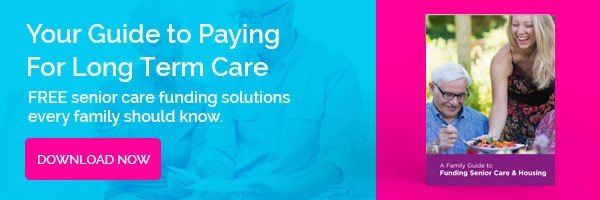Many seniors and their families automatically rule out senior living because they assume there’s no way they can afford it. Not so fast; especially if you are a wartime veteran or the surviving spouse of a veteran. There’s a benefit known as Aid and Attendance which can significantly expand your buying power for senior living. Here’s how.
Veterans Aid and Attendance Overview
The Aid & Attendance benefit was established in the 1950s to help wartime veterans or their surviving spouse pay for care in independent living, assisted living, home health care, adult day care or skilled nursing by providing monthly payments in addition to their monthly VA pension.
For more information on preparing financially for retirement, check out our Family Guide to Funding Senior Care & Housing!

Who is Eligible for Veterans Aid and Attendance?
According to the U.S. Department of Veterans Affairs, you may be eligible for the Aid & Attendance benefit if you receive a VA pension and meet at least one of these medical requirements:
- You need another person to help you perform daily activities, like bathing, feeding and dressing.
- You have to stay in bed – or spend a large portion of the day in bed – because of illness.
- You are a patient in a nursing home due to the loss of mental or physical abilities related to a disability.
- Your eyesight is limited (even with glasses or contact lenses you have only 5/200 or less in both eyes; or concentric contraction of the visual field to 5 degrees or less).
How Aid and Attendance Can Help with Senior Living Costs
By giving you or your loved one increased buying power, the Aid and Attendance benefit helps in two ways:
- It opens up more options when it comes to choosing the senior living community that fits your needs best.
- It also gives you peace of mind in being able to stay in the community longer than your budget otherwise may have allowed.
What’s more, the Aid and Attendance benefit is tax free and paid directly to you by the Treasury Department.
How to Apply for Veterans Aid and Attendance
To apply for the Aid and Attendance benefit simply send a completed VA form to the Pension Management Center (PMC) that serves your state. Find your PMC here. You may also apply in person at a VA office near you.
There are local experts who will work for you in walking you through the application process. Fees are typically associated with this support. Our community sales directors can provide information should you want to go this route.
Keep in mind that it can take six months or more for your application to be approved so it’s better to plan ahead than to wait until the need for senior living is urgent. However, the VA does retroactively from the date of application once it’s approved.
For more information, check out our Family Guide to Funding Senior Care & Housing!



